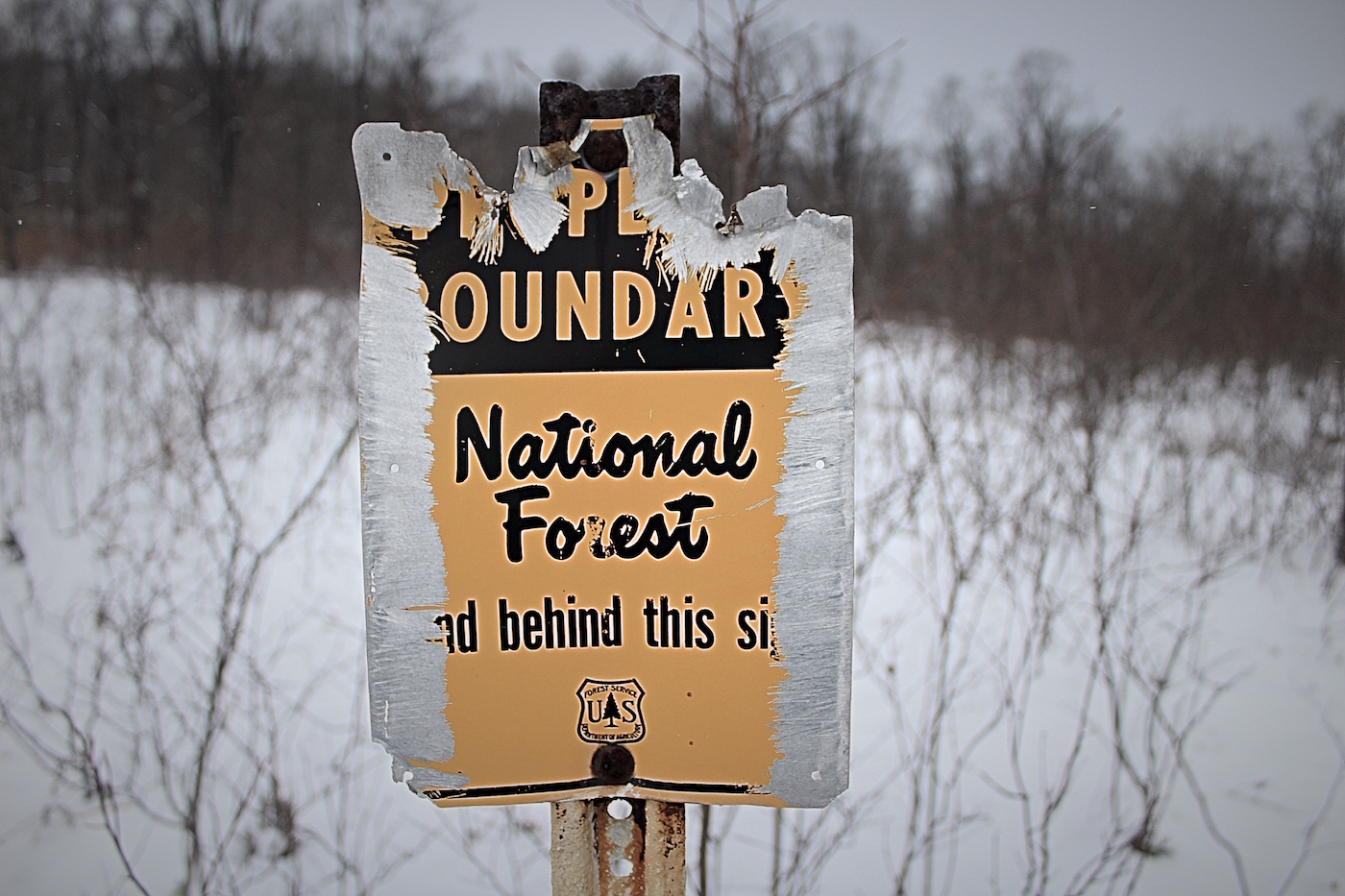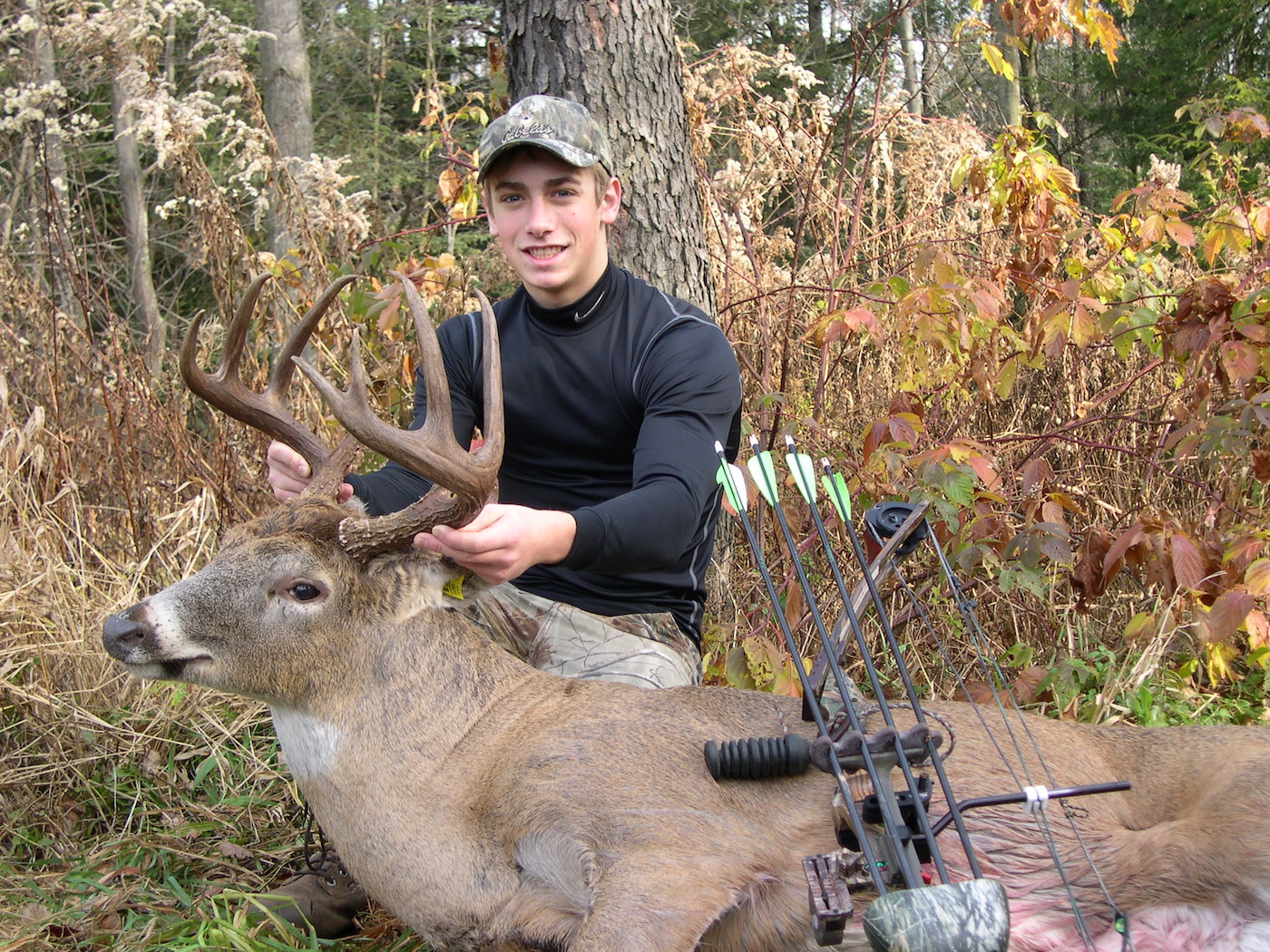Growing up in the Appalachian range of Pennsylvania, I’ve chased whitetail deer, turkeys, bears, and coyotes my entire life. I never realized how lucky I was to live in the only National Forest in the state, hunting public land mountain deer. The more I immersed my life in bowhunting these whitetails, the more I wanted to experience the other side of the spectrum. I embarked on my first DIY western hunt in the Rocky Mountains last September, and went back again this year. Surprisingly, I noticed some similarities between hunting the mountainous regions of my home state with hunting the “real” mountains of the West.
When most people think of hunting whitetails, they think of the heartland of the Midwest — their abundance of crop fields and relatively flat land. This correlation is mostly due to what we are exposed to on outdoor television and publications. There is an entirely different side of whitetail hunting that spans from North Carolina, through West Virginia, Pennsylvania, and the rest of the Northeast that rarely gets publicized. Bowhunting whitetail deer in this environment is extremely difficult because of the relatively low deer densities and low quality food sources that typically don’t produce the size of deer that you may find in the Midwest.

Midwestern Farmland vs. Appalachian Big Woods
Ever since I started hunting whitetails, I would watch outdoor television and read articles on how to kill big bucks, but these tactics never really seemed to work for me. I didn’t get it… Why weren’t these tactics and “Seven Keys to Success” working for me? Through years of hunting in northern Pennsylvania, and learning from my father, it was clear to me that we were hunting a different type of deer. In the Midwest, you are typically hunting in areas with large crop fields, food plots, distinct bedding areas, and semi-predictable winds. I know that I am somewhat generalizing by categorizing all of the Midwest into one group, but a quick Google search for “how to kill mature whitetail bucks” and some of my personal experiences will back this up. I’m not saying that it is easier to kill mature bucks in these areas, but it is most certainly different.
To start off, the food sources are like night and day. In the big woods environment that a lot of us Appalachian hunters are used to, the deer feed mostly on browse — meaning leaves, twigs and buds off of plants and trees. Browse can be found essentially everywhere in the big woods setting, in addition to acorns (in areas that have oak trees) or fruit. Logging also plays a big role in many of these areas with an abundance of clear cuts, making them great areas for deer to bed and feed in the same place. The new trees grow thick, creating the perfect bedding cover as well as browse for them to eat by just standing up out of bed. This can make it very difficult to pattern deer early in the season.
Another big difference between the crop-fed Midwestern bucks and browsing mountain bucks is antler size. Due to the quality of food and genetics, Midwestern deer typically have larger antlers. These large antlers make them perfect for television, articles, and social media. It’s important to recognize this while you’re hunting mountain bucks, and to have realistic expectations. There are definitely some giant racks that come out of the Appalachian Mountains, but they are fewer and further in between.

Similarities to Western Mountain Hunting
There are not any 14,000-foot peaks in Pennsylvania, but there are a lot of large public land areas that can be steep and rugged. Using the terrain features is key to learning how the bucks will bed and travel. In addition, thermals play a big part in how they move and how you have to hunt them. The thermals will come down the valleys in the morning, and rise as the sun starts to warm up the hills. For most of the steep areas, you cannot completely rely on what the weather forecast predicts for wind direction, and even temperature. It takes time learning each area to discern how the thermals will act in specific locations. Through scouting right after the season, and shed hunting in the spring, I pay close attention to what the wind is doing in the areas that I plan to hunt, keeping detailed notes.
With the terrain being unfavorable, the majority of hunters will hunt the very tops and the bottoms, because that is where most of the roads are located. The old mountain bucks are well aware of this, and use it to their advantage. Being in good physical shape allows you to access the areas where hunters just won’t go. This may be 2-3 miles from the nearest road, or climbing up a steep ravine in an overlooked spot closer to the road. Whatever the task may be, being in good shape will increase your odds, as well as help you get a deer back out of these valleys when you are successful. In the mountain hunting space, mental toughness seems to get talked about a little more than with whitetail hunting. When you have to hike a few miles back to your spot with all of your gear and a stand on your back for the 7th straight day of dark-to-dark sits, while seeing a limited number of deer, it can play games with your head.
Above all, I believe that the biggest similarity between western mountain hunting and eastern mountain hunting is the adventure. Whether you’re in the big woods of Pennsylvania, or the mountains of Colorado, you can get away from your everyday, fast-paced life and enjoy the quietness of the woods.

Hunting the Rut in the Big Woods
I love to focus on funnels around bedding areas, saddles, and creek-bottom travel corridors in and around the rut. I mentioned earlier about thermals being an issue, as well as creek-bottoms being easier to access. If you can find a secluded creek bottom that is usually a feeder stream to a larger creek or river, they are used for traveling during the rut. When the temperatures are cold enough in the mornings that your thermals are going straight up, you will find me sitting in a tree stand near one of these travel corridors. Almost 10 years ago, I called in an 8.5-year-old public land buck while sitting in a creek bottom on the last day of archery season in the middle of November. I killed this deer over 6 miles away from where I had trail camera pictures of him over the summer.

In really steep country, I like to hunt just over the edge of a saddle on a ridge. From my experience, a lot of the old bucks will run just over the edge of these ridges off of the main beaten trails to avoid being in the skyline, and potentially away from hunters walking the ridges.
If you don’t have a lot of time off from work, hunting the pre-rut/rut time frame will obviously be your best bet for succeeding in running into an old, mountain warrior. This is a busy time of year in the woods as most hunters usually take off during this time frame, so finding out where other hunters don’t go is vital information; along with having plenty of backup locations. As the saying goes out West, if you’re willing to hike you’ll likely find some less pressured locations.

Woodsmanship
True woodsmanship is somewhat of a lost art these days, but is very useful in hunting mountain bucks. There is only so much you can learn from maps, Google Earth and other online resources like podcasts. Looking for rubs, scrapes, and typical deer trails won’t tell you the entire story of why the deer are doing what they’re doing. Spending time in the woods, with boots on the ground, walking and observing all the details and thinking like a deer will make all of the difference. I try to apply this every time I step into the woods to accurately understand animal behavior and how that relates to the particular landscape that I am hunting.
There is no better feeling than putting the pieces of the puzzle together and filling your tag. Killing a mature mountain buck is something that you can be proud of — something only a small percentage of people are able to do every year. There is a sense of adventure that I haven’t been able to find hunting whitetail deer in other environments that continually brings me back.

DESTINATIONS IS BROUGHT TO YOU BY GUNWERKS – CUSTOM LONG-RANGE RIFLES AND BALLISTICS

